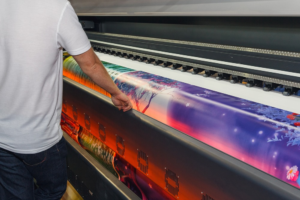In recent years, the textile industry has been grappling with sustainability challenges, seeking innovative solutions to reduce its environmental footprint. One promising approach that has gained momentum is regenerative agriculture. This holistic farming practice not only enhances soil health but also offers significant benefits for textile production. In this blog, we’ll explore what regenerative agriculture is, how it differs from conventional farming, and its profound impact on the textile industry.
Understanding Regenerative Agriculture
Regenerative agriculture goes beyond sustainable farming by actively improving and revitalizing the ecosystems it operates within. This method emphasizes soil health, biodiversity, and water management, aiming to restore and enhance the natural environment. Key principles of regenerative agriculture include:
1. Soil Health Improvement:
Practices such as cover cropping, crop rotation, and reduced tillage help enhance soil structure and fertility.
2. Biodiversity:
Integrating a variety of crops and livestock promotes a balanced ecosystem.
3. Water Management:
Techniques like rainwater harvesting and efficient irrigation systems conserve water.
4. Carbon Sequestration:
Increasing organic matter in the soil captures atmospheric carbon dioxide, mitigating climate change.
Regenerative Agriculture vs. Conventional Farming
The primary distinction between regenerative agriculture and conventional farming lies in their approach to land and resource management. Conventional farming often relies on synthetic fertilizers, pesticides, and monocropping, which can degrade soil health over time. In contrast, regenerative agriculture focuses on natural processes and diversity, leading to long-term environmental benefits.
Tangible Changes in Regenerative Agriculture:
– Reduced reliance on chemical inputs
– Enhanced soil fertility and biodiversity
– Improved water retention and reduced erosion
– Increased resilience to climate change
Impact on Textile Production
1. Sustainable Raw Materials:
Regenerative agriculture produces high-quality raw materials such as cotton, hemp, and wool. These fibers are grown in a manner that enhances soil health and biodiversity, making them more sustainable compared to conventionally grown fibers.
2. Enhanced Fiber Quality:
Healthier soil and ecosystems contribute to stronger and more resilient crops. This translates to higher-quality textile fibers, which can improve the durability and longevity of fabric products.
3. Reduced Environmental Footprint:
By promoting practices that sequester carbon and reduce chemical usage, regenerative agriculture helps lower the overall environmental impact of textile production. This aligns with the growing consumer demand for eco-friendly products.
4. Economic Benefits for Farmers:
Farmers practicing regenerative agriculture often see increased yields and reduced costs over time. This economic stability encourages more producers to adopt these practices, creating a more sustainable supply chain for the textile industry.
5. Positive Brand Image:
Companies that source materials from regenerative agriculture can leverage this in their marketing, appealing to eco-conscious consumers. This can enhance brand reputation and loyalty.
At Texcoms, we recognize the immense potential of regenerative agriculture to transform the textile industry for the better. We are committed to integrating sustainable practices into our operations and supporting initiatives that promote environmental stewardship.
Regenerative agriculture represents a transformative approach to farming that offers substantial benefits for the textile industry. By focusing on soil health, biodiversity, and water management, this practice not only produces sustainable raw materials but also contributes to environmental restoration. As more companies and consumers recognize the importance of regenerative agriculture, the textile industry is poised to become a leader in sustainable production practices.
Embracing regenerative agriculture is not just an ethical choice; it’s a strategic move towards a more resilient and sustainable future for textiles. By supporting these practices, the textile industry can ensure a healthier planet and a thriving market for generations to come.


